Knowing how to measure employee engagement is the first step to improving it. But that’s more easily said than done. In this post, we’ll explore 10 proven employee engagement measurement strategies, from email analytics to pulse surveys and eNPS scoring, so you can build a more inspired, productive workforce.
Engaged employees are more than just satisfied—they’re productive, motivated, and deeply aligned with your company’s mission. They stay longer, contribute more, and help drive better business outcomes. But boosting engagement starts with clarity—and that means knowing how to measure employee engagement effectively.
In today’s workplace, which is full of change and evolution, you can’t afford to guess. Tracking employee engagement metrics like eNPS, internal email engagement, and pulse survey results gives you the visibility to take real action. Because at the end of the day, you can’t improve what you don’t measure.
A successful employee engagement program doesn’t rely on assumptions. It’s grounded in real-time data. That means consistently collecting employee feedback, monitoring internal communications, and using the right employee engagement measurement tools to stay connected and responsive to your workforce. In this blog post, we cover what you need to know to measure employee engagement through 10 action-oriented strategies.
Unlock Internal Comms Superpowers
Discover why 10,000+ rely on us. See the internal email and employee newsletter platform in action.
Book demo
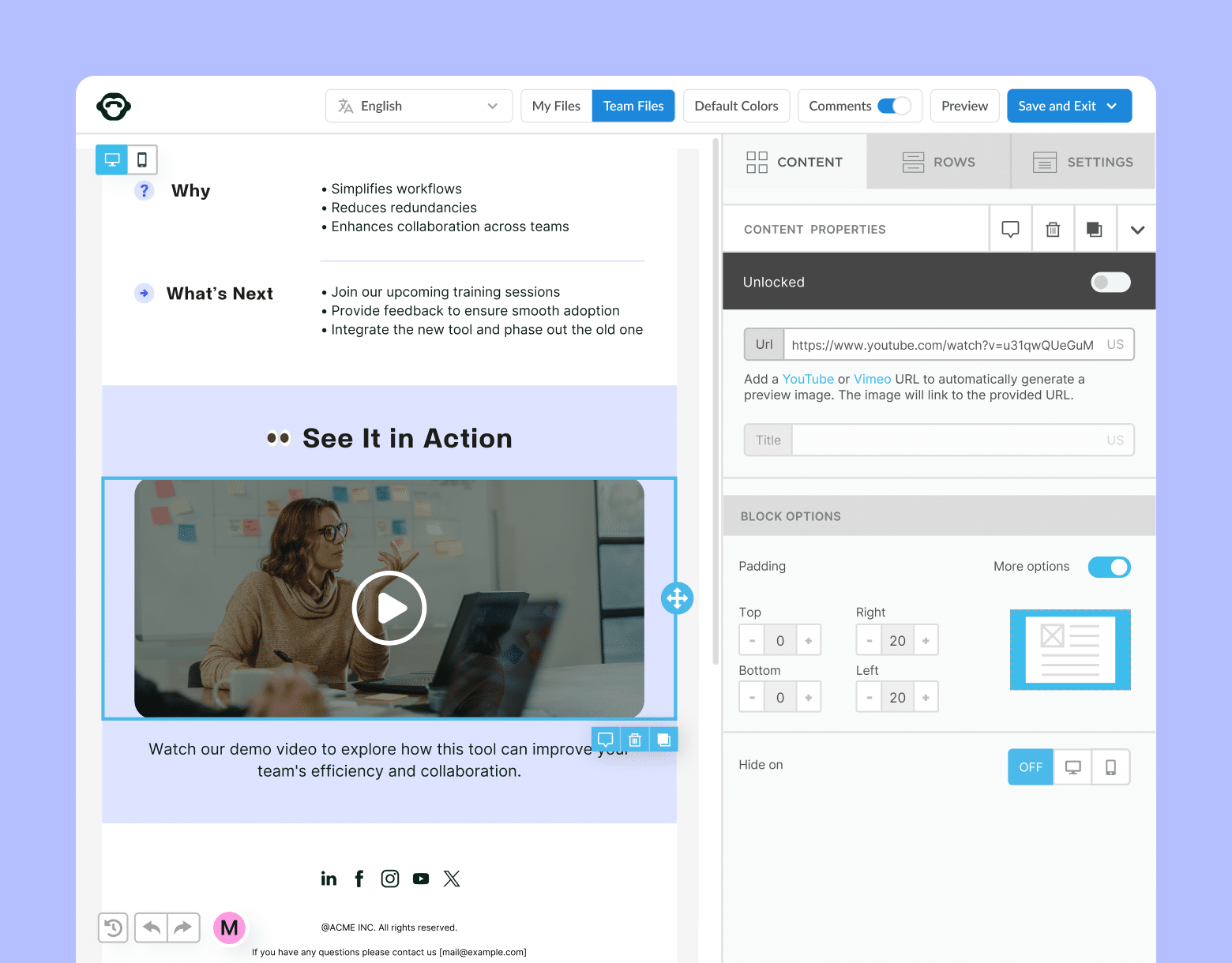
What is Employee Engagement?
Employee engagement is the level of emotional commitment and motivation employees feel toward their work and the organization they’re part of. It reflects how connected employees are to company values, how much effort they’re willing to put in, and how likely they are to stay and grow within the organization.
Unlike basic job satisfaction, engaged employees are proactive. They take initiative, support team goals, and care about the success of the business—even when no one is watching.
Key traits of engaged employees:
- They feel a strong sense of purpose in their roles.
- They align with company mission and values.
- They actively contribute ideas and solutions.
- They’re less likely to leave when offered external opportunities.
Why Measure Employee Engagement?
Measuring employee engagement helps organizations understand how motivated, committed, and satisfied their workforce really is. When you know how engaged your employees are, you can take strategic action to improve performance, reduce turnover, and create a better employee experience.
Here’s why measuring employee engagement is important:
- Business teams with highly engaged employees have a 59% lower turnover rate than those with less engaged staff.
- Highly engaged teams are 17% more productive.
- Businesses with highly engaged workers have a 6% higher profit margin.
- Engaged employee teams experience 10% higher customer reviews.
When employees feel valued, heard, and connected to their work, they give more and stay longer. Tracking employee engagement metrics like eNPS, pulse surveys, or internal email interaction helps leadership spot risks early, build stronger teams, and drive better results.
Get powerful email analytics and reporting features
Know exactly who is opening and engaging with your employee communications and company newsletters.
Explore analytics & reporting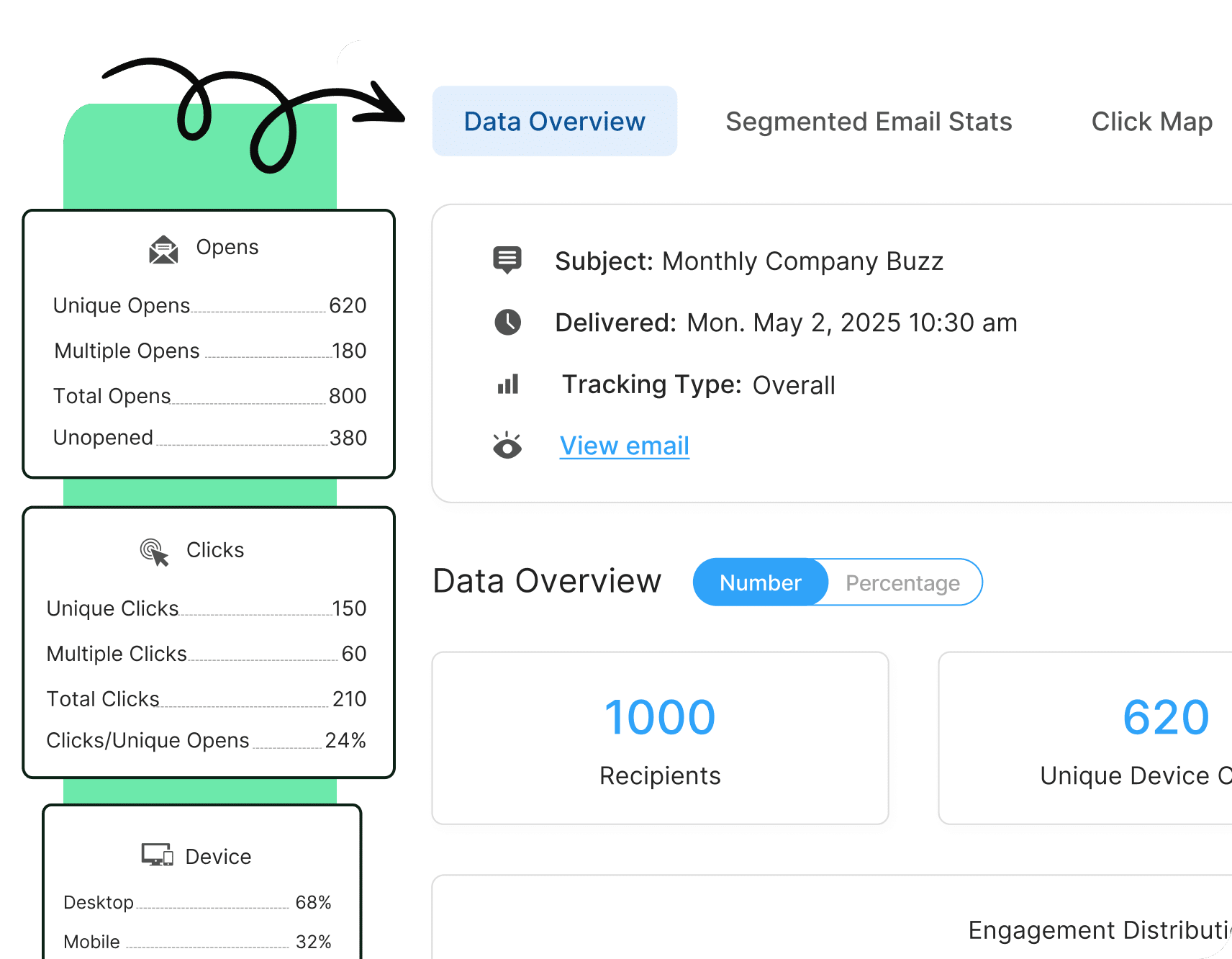
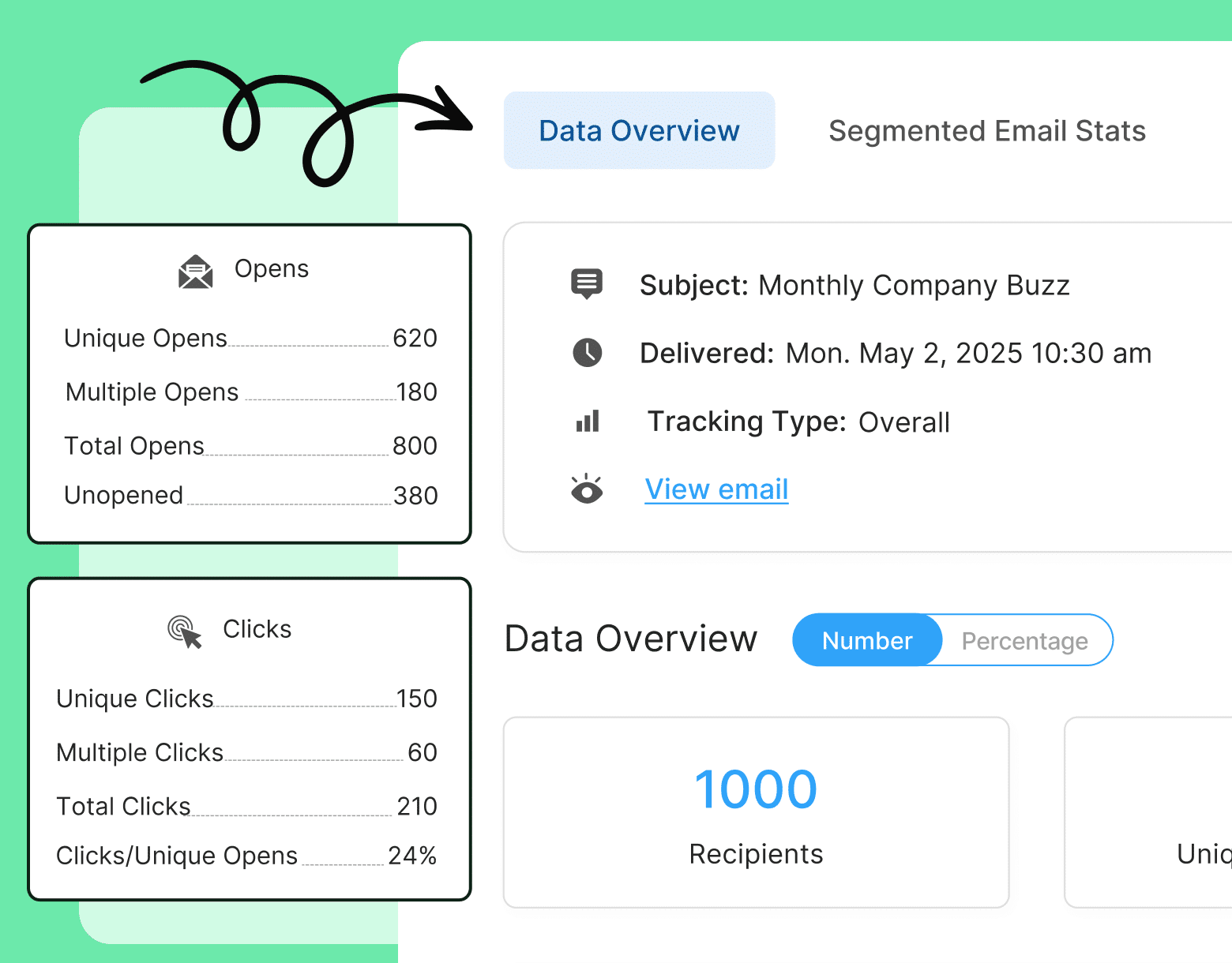
10 Ways to Measure Employee Engagement
Now that we’ve established why we should measure employee engagement, let’s discuss how to measure employee engagement.
Measuring employee engagement isn’t always easy to quantify. Engagement can be an emotion, a state of mind, or a subliminal sense of connection.
Remote employee engagement brings added challenges, too. While you might notice an employee’s apathy or dissatisfaction through body language and facial expressions in person, it’s much harder to do so virtually. The same goes for frontline employee engagement.
Luckily, there are some great techniques and employee engagement apps to help measure employee engagement—regardless of workplace setting. Here are 10 ways to measure employee engagement:
1. Establish clear employee engagement goals
Before you can improve engagement, you need to define what it looks like. Clear employee engagement goals give your team something to aim for and help you measure whether your efforts are working over time.
Why this is relevant: Without benchmarks, it’s difficult to know whether employees are truly engaged—or just going through the motions. Goals keep your engagement program focused and measurable.
Common examples of employee engagement goals:
- Employees feel their opinions are valued
- Employees report opportunities for growth and development
- Average eNPS score of 9 or above
- Employee absenteeism below 1.5%
- Quarterly engagement survey scores are trending upward
- Internal email open rates meet or exceed industry benchmarks
Considerations: Make sure your goals reflect a mix of qualitative and quantitative outcomes. And revisit them regularly—what engagement looks like today may evolve as your workplace changes.
PRO TIP: Use ContactMonkey’s internal email benchmark report to compare your email performance against industry standards and set realistic targets.
2. Measure internal email engagement
Don’t underestimate old-fashioned email when it comes to measuring employee engagement. In fact, tracking internal email is the easiest and fastest way to gather hard data. Not to mention, it’s one of the top ways to measure employee engagement on a regular basis with minimal effort. Remember, email is already the most popular internal communication tool for driving employee engagement. Its accessibility and ease of use mean that teams of all sizes rely on it daily.
Why this is relevant: If no one’s opening or clicking your emails, they’re likely disengaged—or the message isn’t resonating. These small signals can indicate bigger communication issues.
Common examples of internal email engagement metrics to monitor:
- Open rate: Are employees reading your updates?
- Click-through rate: Are they taking action on what you share?
- Heatmaps by department: Which teams are the most engaged?
Considerations: Email fatigue is real. Keep messages short, relevant, and personalized—and test different formats to see what drives the most interaction.
PRO TIP: With employee engagement measurement tools like ContactMonkey, you can embed pulse surveys, reactions, and feedback forms right into your emails—no external links, no friction.
Start two-way conversations and employee feedback loops
Learn how to engage staff with pulse surveys, content ratings and reactions, custom polls, and more. Ready to send modern emails?
See engagement features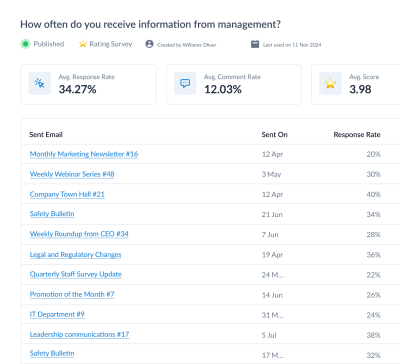
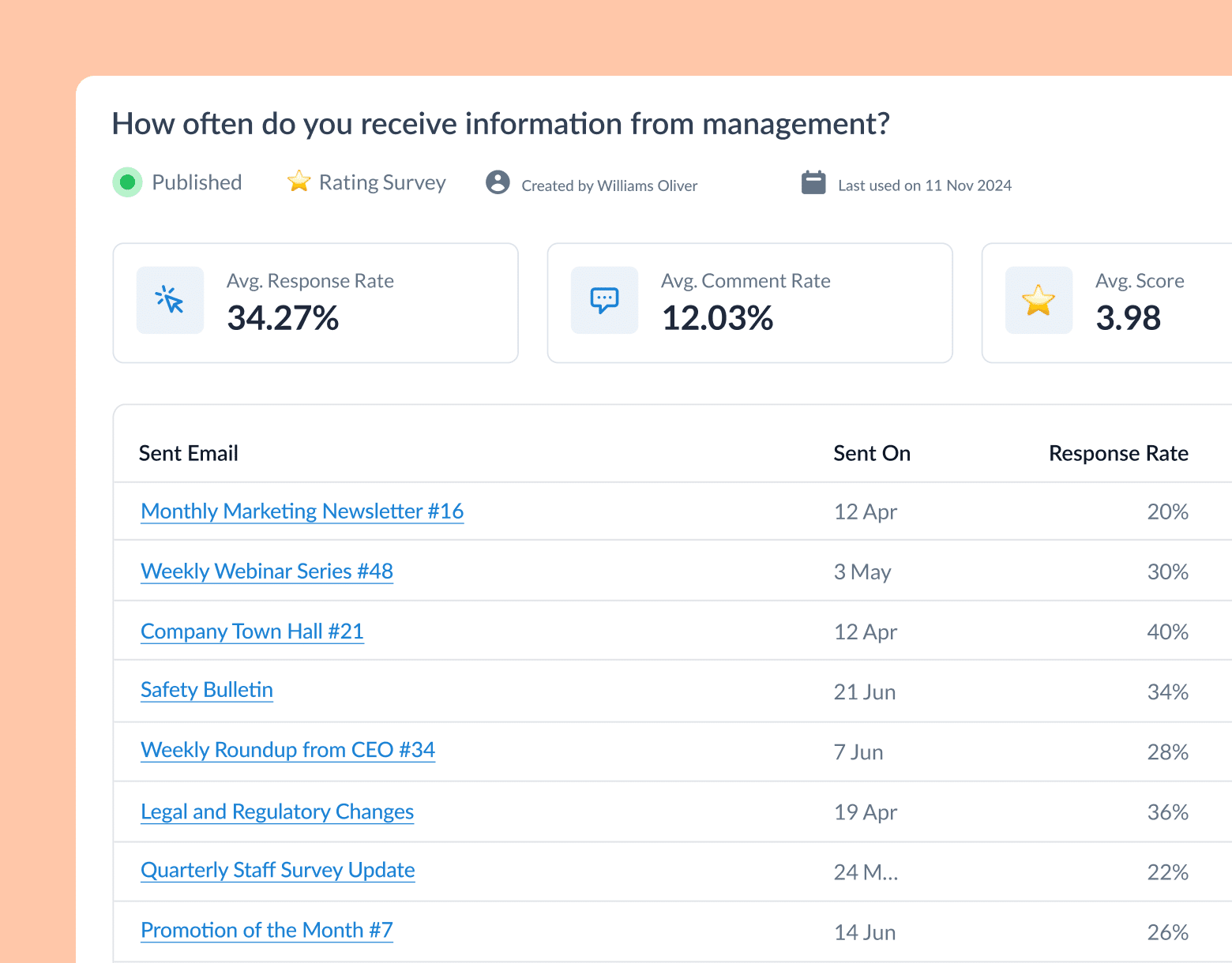
3. Measure staff engagement with pulse surveys
Pulse surveys are one of the most efficient tools for tracking employee engagement in real time. Their short, focused format makes it easy to gather honest feedback without overwhelming your workforce.
Why this is relevant: Because they’re quick and consistent, pulse surveys generate higher response rates and uncover engagement trends faster than annual surveys. They also help you act on feedback while it’s still relevant. Remember though, the key is asking simple but meaningful employee engagement questions.
Common examples of questions to ask to gauge staff engagement:
- Satisfaction: “Do you feel motivated to do your best work?”
- Opportunity: “Do you see clear paths for growth in your role?”
- Alignment: “Do you feel your voice is considered in leadership decisions?”
Considerations: Keep questions focused and consistent over time to track patterns. Avoid survey fatigue by spacing them out and always following up on the insights you gather.
PRO TIP: Using ContactMonkey’s employee pulse survey tool, you can seamlessly incorporate pulse surveys into your weekly employee newsletter. Just drag and drop the survey tile onto your email template, choose your survey type, and attach a question.
BONUS: Learn how to create pulse surveys quickly with our step-by-step guide.
4. Calculate your eNPS
Number crunchers love eNPS (employee Net Promoter Score). Unlike more qualitative employee engagement metrics, eNPS is great for getting a precise, numeric engagement score. eNPS is calculated based on the difference between your most engaged and least engaged employee. Put simply, it tells you how likely your employees are to brag about your company to others.
Why this is relevant: Unlike long-form surveys, eNPS gives you a fast, quantitative read on overall sentiment. It’s easy to track over time, benchmark across teams, and compare against industry standards.
A common example of an eNPS question: Frame your survey around specific topics relating to employee engagement.
We recommend asking:
- On a scale from 0-10, how likely are you to recommend this organization as a place to work?
Considerations: Track eNPS regularly—quarterly or biannually—to spot patterns and shifts. Pair results with qualitative feedback to better understand what’s driving promoter or detractor behavior.
PRO TIP: With ContactMonkey, learning how to measure employee engagement is easy. A built-in eNPS survey lets you gather feedback and find out your eNPS score all in one place—your employee newsletter. It’s simple: select an eNPS survey from the email template builder sidebar and drag it to your desired location within the newsletter.
5. Set up one-on-one virtual meets
One-on-ones allow for more detailed and meaningful employee feedback while letting you gauge non-verbal cues. It’s also one of the most simple and straightforward best practices for employee engagement. In a virtual setting, making employees feel seen and heard is the key to creating a safe feedback environment. It will also lead to more meaningful answers.
Why this is relevant: Personalized conversations help uncover the stories behind the data. They create space for employees to open up, ask questions, and share feedback they may not feel comfortable expressing in a survey.
Common examples of questions to ask in one-on-ones: One-on-ones are a great opportunity to get qualitative feedback, so we recommend trying some of the following questions:
- What’s one thing about your work experience that is really positive?
- Is there an element of your work experience that needs improvement?
- Which three words or phrases best describe your organization’s culture?
Watch ContactMonkey LIVE in action
Join live demo
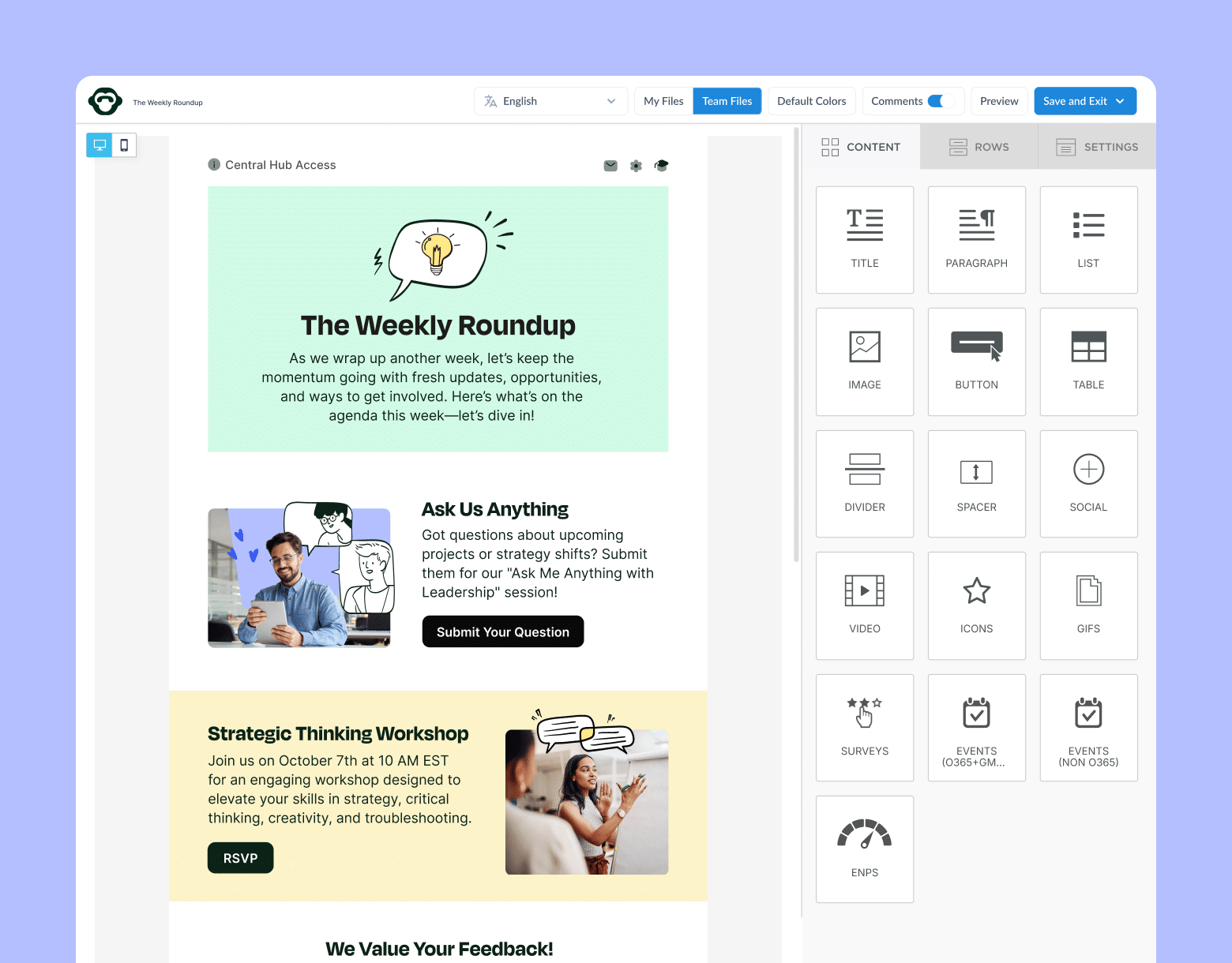
Considerations: Come prepared. Remove distractions, actively listen, and summarize key takeaways to show you’re engaged. Schedule these check-ins regularly—not just during performance reviews.
BONUS: Step up your remote team communication with our list of fun virtual team-building activities for work.
6. Set up a focus group
Used widely in market research, focus groups allow you to gauge employee likes, dislikes, and attitudes through a representative sample. This is especially useful for larger businesses where one-on-ones may be harder to arrange.
Why this is relevant: While surveys give you data points, focus groups give you stories, context, and emotional nuance. They’re especially valuable in large organizations where one-on-ones aren’t scalable.
Common examples of how to approach focus group measurement: To measure employee engagement through focus groups, create a callout for participants using your internal newsletter. Choose employees from specific departments or combine staff from across the company for a wider outlook. With a set of pre-planned questions, guide a discussion about team wins and challenges. For engagement-focused insights, ask questions like:
- Do you have a good sense of your role in contributing to organizational goals?
- Is there anything that’s limiting your growth in the organization?
- Do you agree with the way our company defines “success”?
Considerations: Use your internal newsletter to recruit a diverse group of participants. Keep the conversation guided but flexible, and be clear about how insights will be used—transparency builds trust.
PRO TIP: Before your session, review engagement trends from ContactMonkey’s email analytics or pulse surveys. Use these insights to tailor your focus group questions to real-time team challenges.
7. Track and monitor employee retention and satisfaction
Retention is one of the clearest indicators of employee engagement. When employees feel fulfilled and supported, they’re more likely to stay—and less likely to be swayed by outside opportunities.
Why this is relevant: High turnover is costly and often preventable. By tracking retention trends and pairing them with employee sentiment, you can identify risks early and take action before employees head for the door.
Common examples to help you measure employee retention: You’ll need to compare your employee turnover this year or quarter to last. Once you gather the data, ask yourself: If my turnover rate is higher than in the past, what did I do differently then? Did our employee onboarding processes change? To get even better insights, create a quick employee pulse survey dedicated to learning about employee retention. Focus your questions on exploring how employees see their future within the company.
Ask yes/no questions like:
- Do you see yourself still working at [company] in two years’ time?
- Are you proud to work for [Company X]?
Considerations: For surveys on sensitive topics like this, use a pulse survey tool with anonymous feedback options. That way, employees can feel safe sharing their true feelings.
PRO TIP: With ContactMonkey’s internal communications app, both emoji reaction and eNPS-based surveys can include anonymous comment options. Once responses are in, easily track pulse survey response rates on your analytics dashboard.
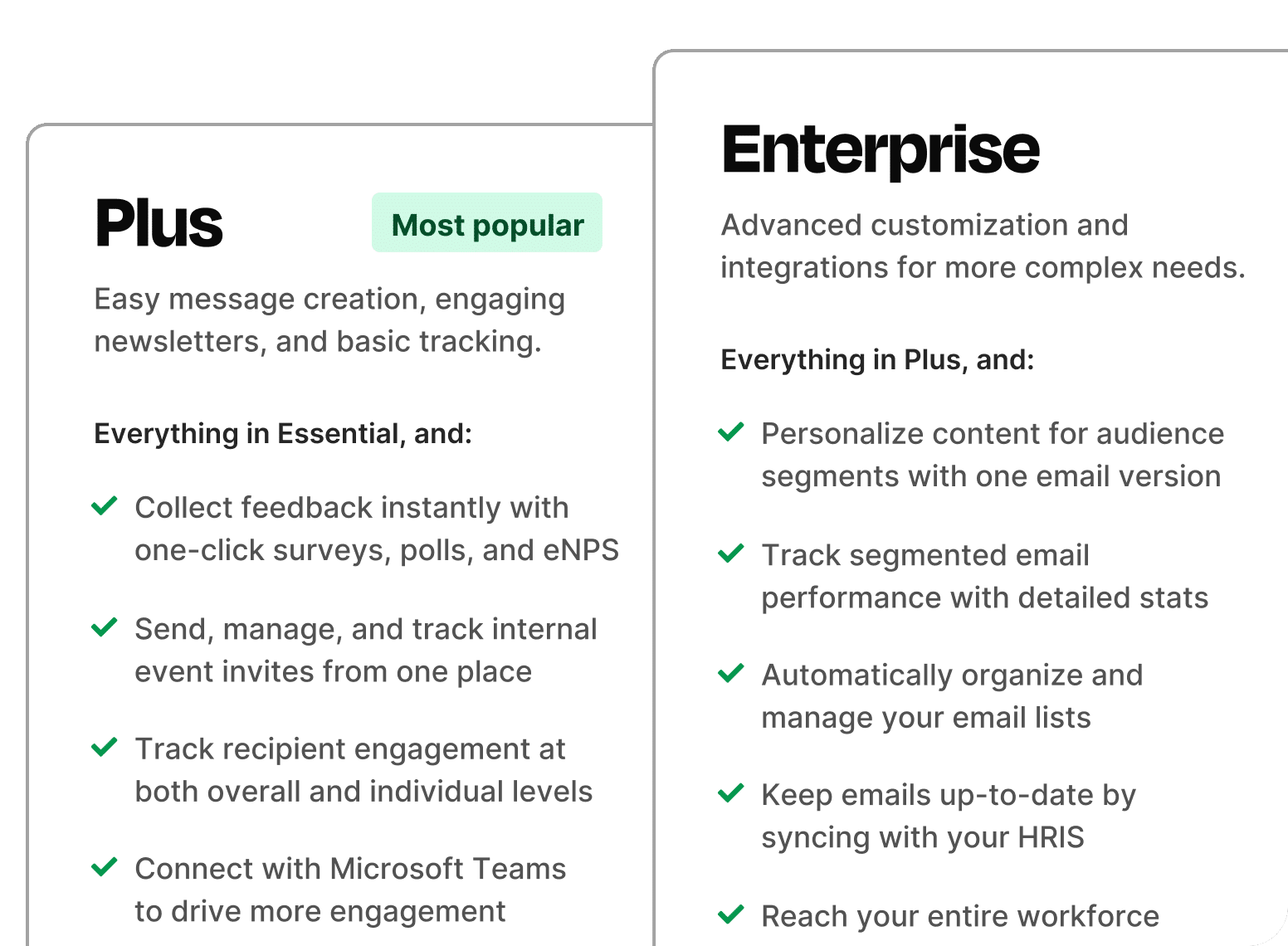
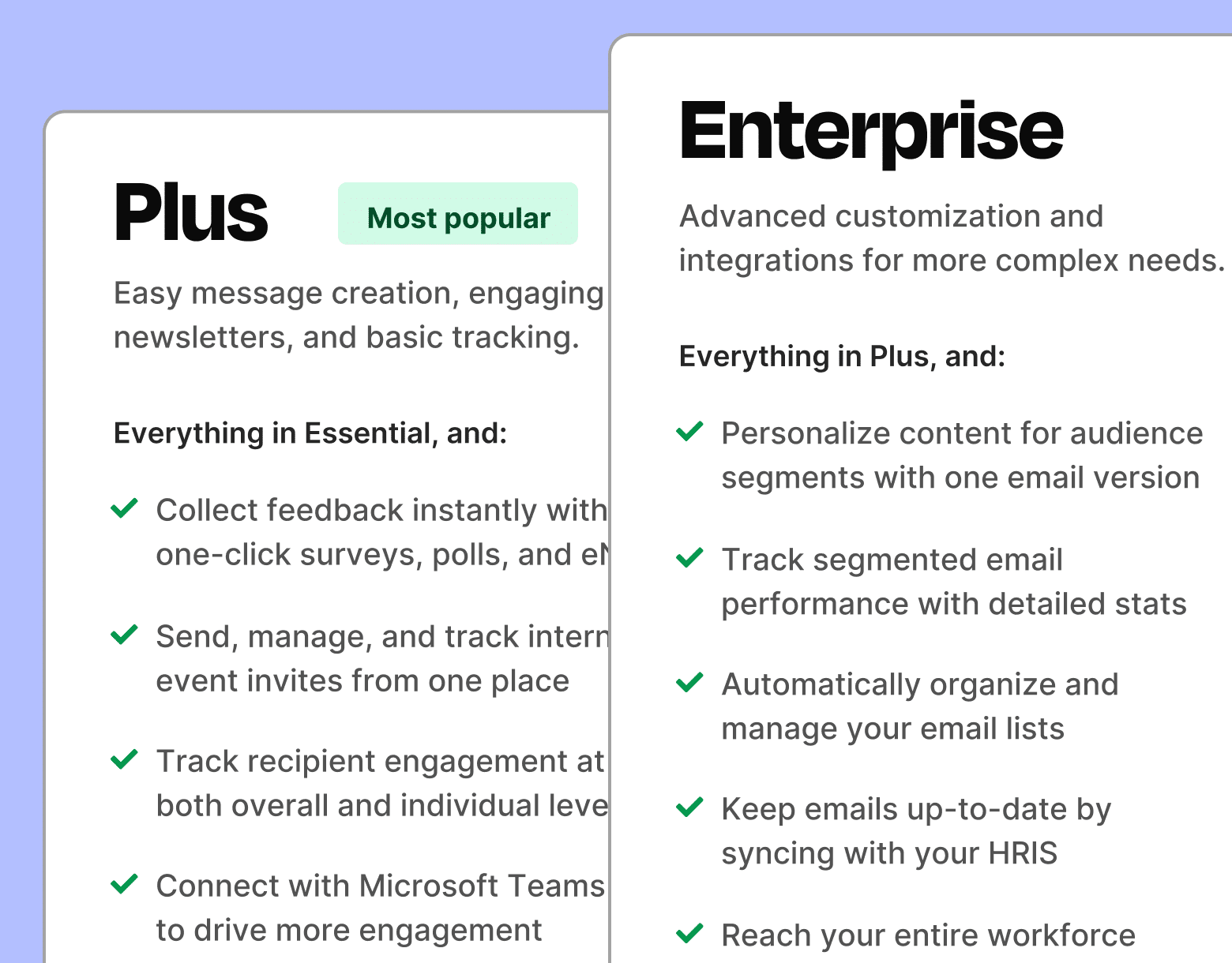
8. Look at employee productivity data
Engaged employees don’t just feel better at work—they perform better, too. Productivity data can serve as a proxy for engagement, helping you identify which teams are thriving and which may need more support.
Why this is relevant: When engagement is high, output tends to follow. Tracking productivity alongside engagement metrics gives you a fuller picture of how employees are showing up—and what’s influencing their performance.
Common examples to help you measure productivity: To measure productivity, divide your revenue for a specific year or quarter by the total number of employees. Compare the results across multiple departments and look for trends, patterns, and improvements.
Considerations: Keep in mind, productivity alone won’t tell you exactly how to increase employee engagement. Always support your employee productivity scan with other employee engagement measurement methods and tools like email tracking software.
PRO TIP: With ContactMonkey’s segmented email stats, you can get engagement data to support your insights on productivity. Access all of your analytics in your analytics campaign dashboard and organize stats based on department, job title, or location. When it comes time to create your engagement strategy, you’ll know exactly which areas of your company you need to prioritize.
9. Check your employee absenteeism rate
When an employee takes a few days off every month, it’s not necessarily a sign of concern. But if you notice that absenteeism is becoming a trend among staff, it’s a red flag for employee engagement.
Why this is relevant: Rising absenteeism often mirrors falling engagement. When employees begin to disconnect, it shows up in their attendance before it shows up in their resignation letter.
Common examples of how to measure absenteeism: Analyze this staff engagement metric by looking at the rate and amount of absent employees over a given period. High absenteeism rates likely suggest high employee disengagement.
To support your insights, cross-reference your data with the responses on your employee pulse surveys.
Ask yourself:
- Did absenteeism increase in the same period that your eNPS plunged?
- Has employee turnover increased at the same time as absenteeism?
Considerations: Look for patterns—not just isolated incidents. A few sick days may mean nothing, but consistent absenteeism across teams can signal a deeper issue worth investigating. Answering these questions will help you better understand your company’s overall staff engagement and employee experience. This will enable you to make well-informed changes.
PRO TIP: Cross-reference absenteeism trends with pulse survey data in ContactMonkey. A dip in engagement or eNPS during the same timeframe can help validate what the numbers are telling you.
Modern internal comms and measurement tools
No design or technical expertise needed. Save time, increase engagement, and dazzle your employees with fun and interactive communications.
Explore all features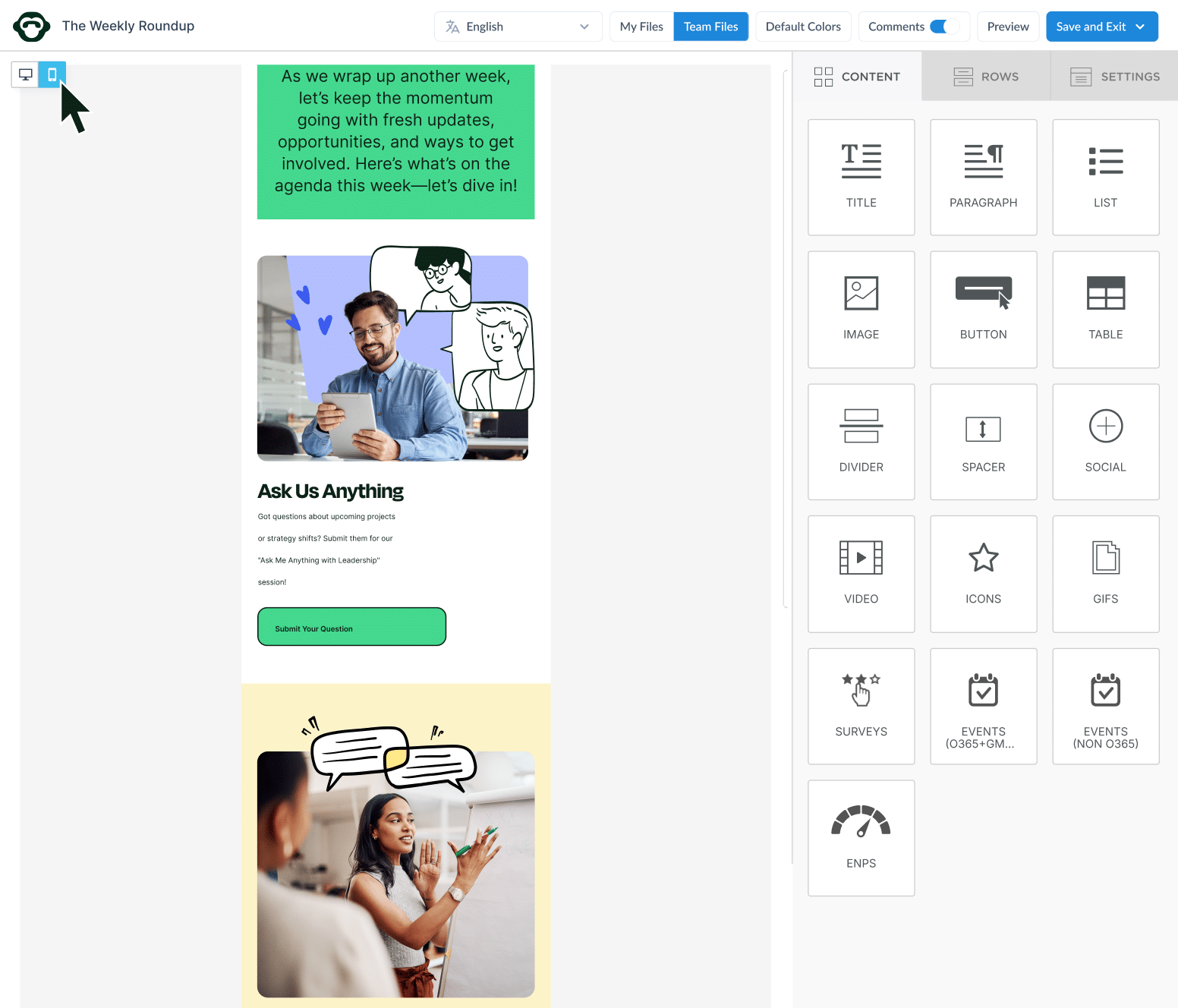
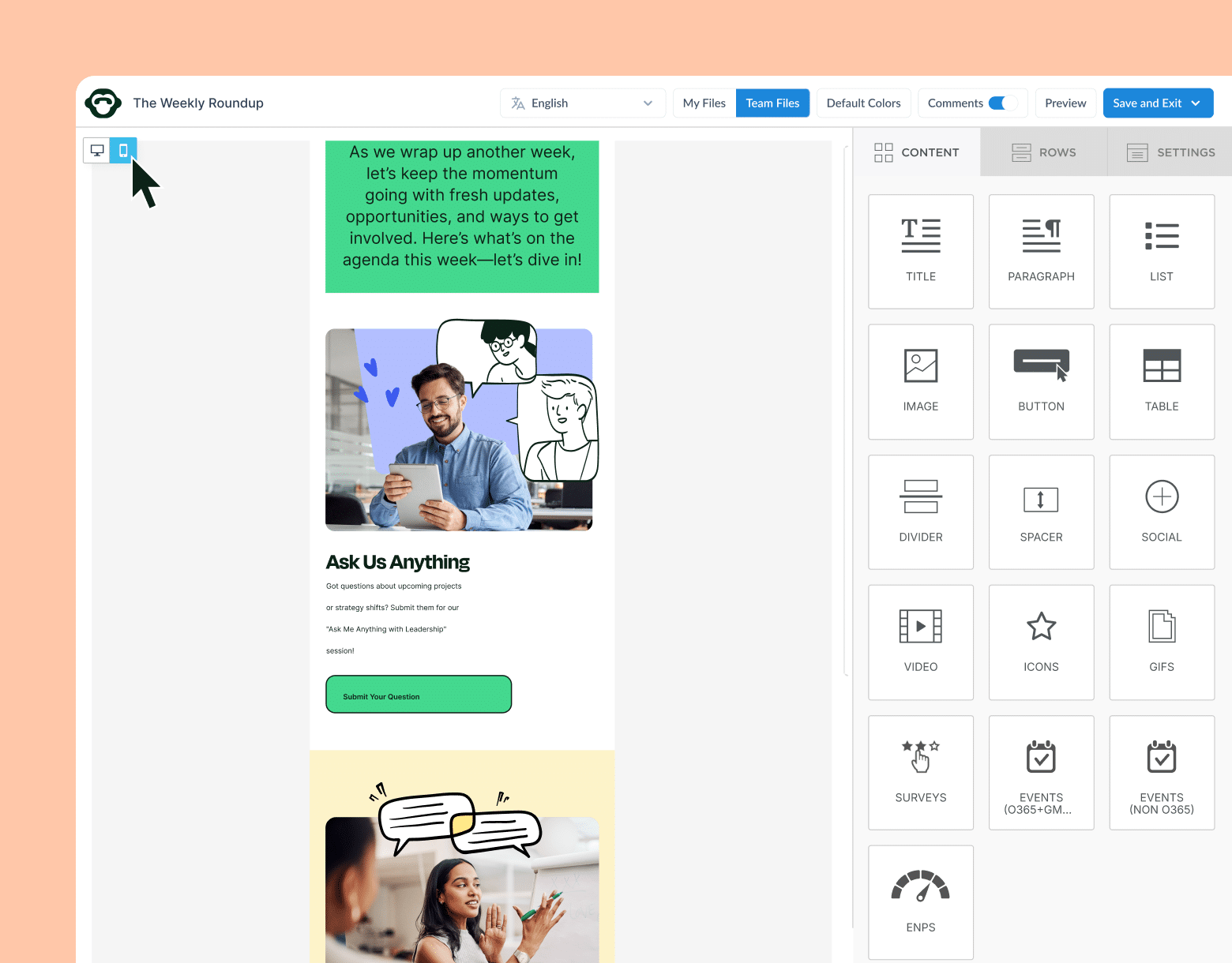
10. Use an exit interview survey
In an exit survey, feedback is collected from employees who are already leaving your company. Ones that are less likely to feel like they’re risking their job if they speak negatively about their experience. This makes exit surveys a treasure trove of honest insights.
Why this is relevant: Understanding why people leave can help you improve how you support the ones who stay. Exit data highlights gaps in leadership, communication, or culture that may be causing disengagement.
Common examples of how to approach exit interview surveys: Use your ContactMonkey pulse survey to send a personalized message to a departing employee and frame it with short, simple questions. Combine quantitative yes/no pulse survey questions with qualitative questions by turning commenting “on” within your email template.
For quantitative questions, we recommend asking:
- Were you equipped to do your job well?
- Did you receive constructive feedback to help you improve your performance?
For qualitative feedback, ask:
- What was a key deciding factor that led you to accept a new position?
- Name one thing you liked most and least about your role.
Considerations: Keep surveys short, neutral, and easy to complete. You’re more likely to get candid responses when anonymity is guaranteed and expectations are clear.
PRO TIP: Send your exit survey via ContactMonkey as part of your offboarding workflow. Enable anonymous commenting so employees can share feedback without hesitation—and turn insights into action.
2025 internal email benchmarks are in!
See where you stand. Download our report to measure your performance.
Get the guide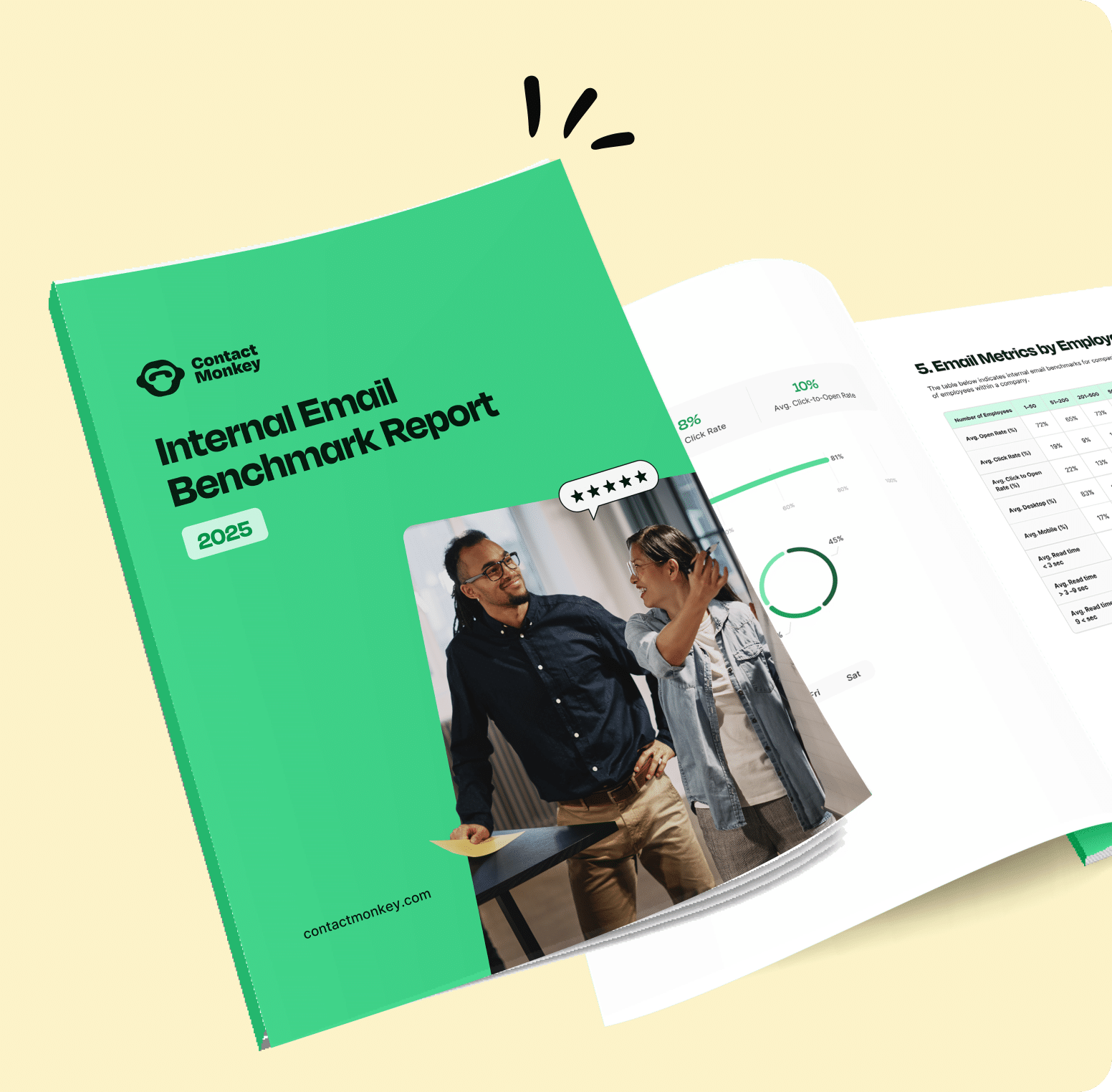
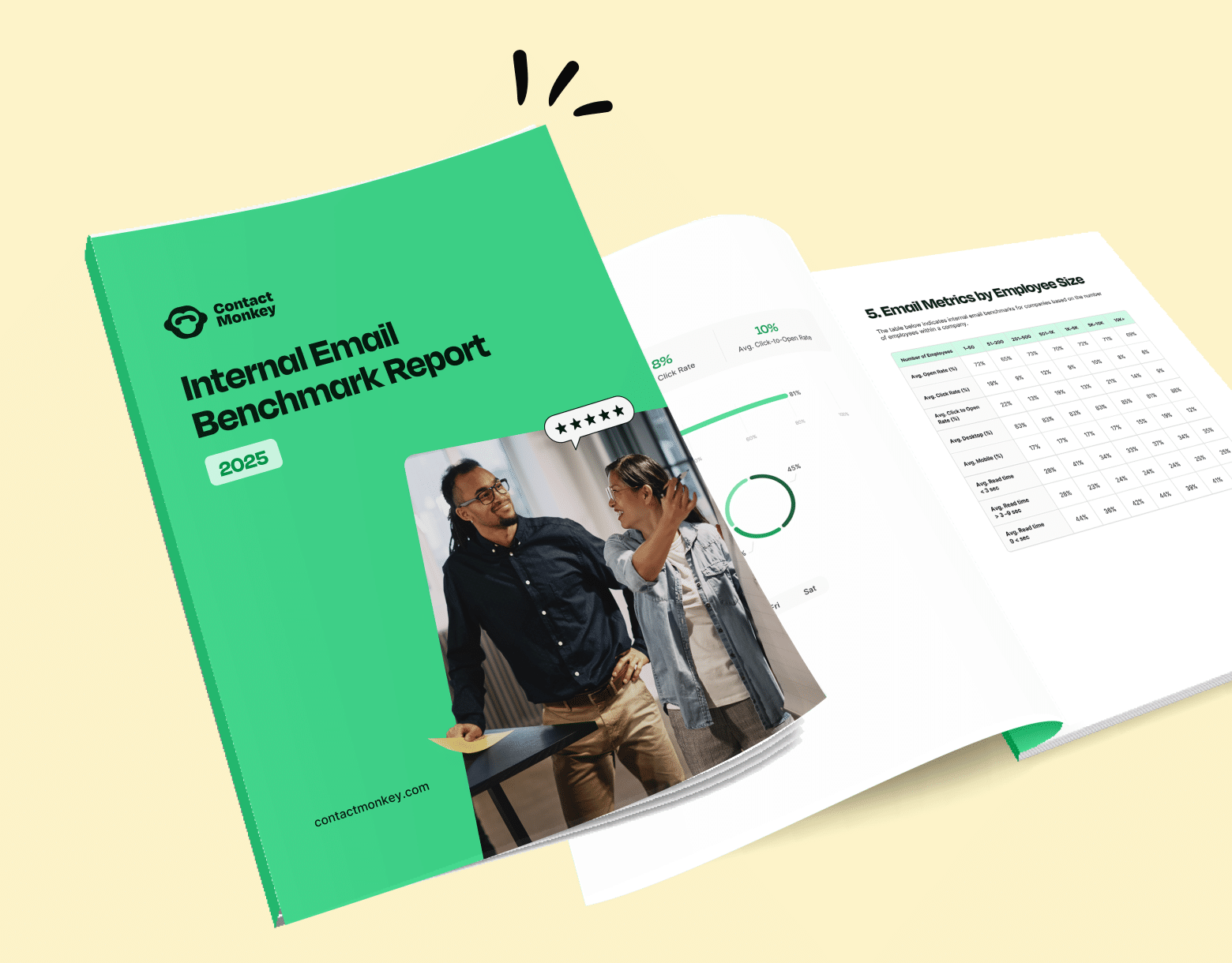
Act on Your Metrics With ContactMonkey
No matter what outcomes your employee engagement metrics show, it’s important to continuously seek improvement. Even if you’re seeing promising results, don’t take it as a sign that you should slacken your efforts.
Employee engagement can easily fluctuate if you don’t properly maintain or build on your engagement strategies. To keep engagement high, implement new employee recognition ideas, prioritize employee well-being, and listen to employee feedback. Knowing how to measure engagement will ensure that you can always address issues in a timely manner. So, bookmark this post so you can always refer back to it!
Email management software like ContactMonkey keeps track of employee engagement quickly, continuously, and effectively. Ready to learn more and see the platform in action? Book a FREE 15-minute call, today!


